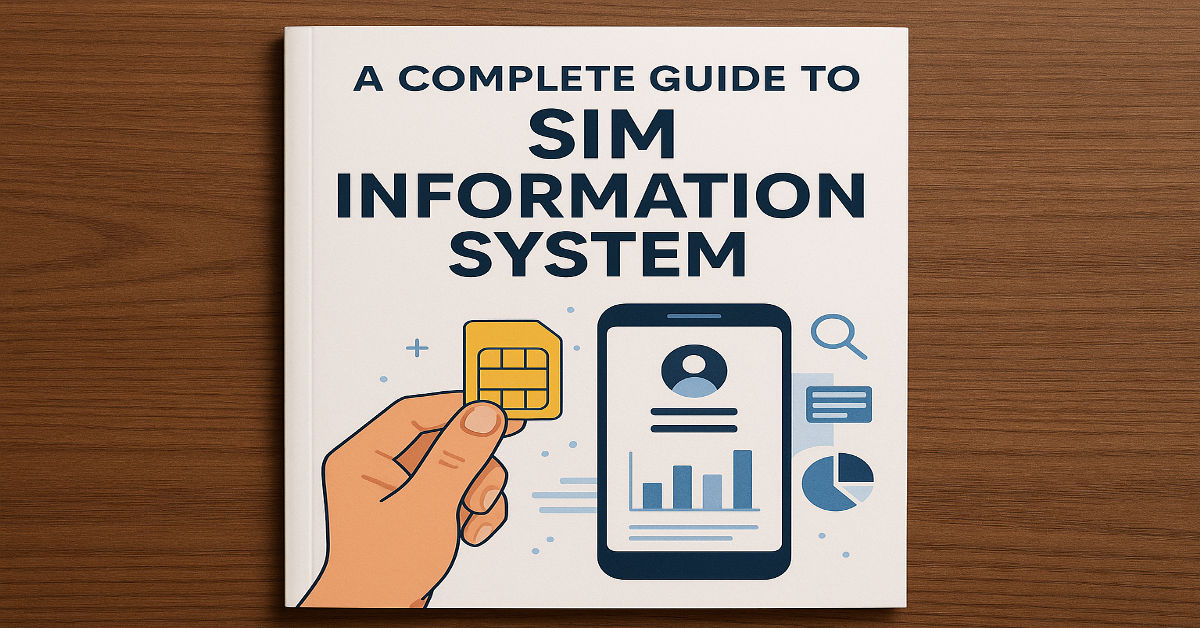
In today’s hyper-connected, fast-paced digital environment, Artificial Intelligence (AI) has evolved from a futuristic concept into a practical, everyday tool. From automating tedious tasks to powering complex decision-making processes, AI is now embedded in countless digital tools across nearly every industry.
For businesses, developers, educators, and even individuals, learning how to use Artificial Intelligence in tools is no longer optional—it’s essential for staying competitive, efficient, and future-ready.
In this comprehensive guide, we’ll explore how AI is transforming digital world tools, which tools to adopt, how to implement them effectively, and what to expect in the near future.
What Is Artificial Intelligence and Why Does It Matter?
Artificial Intelligence refers to the simulation of human intelligence by machines. It enables software and hardware systems to perform tasks that typically require human cognition, such as learning, reasoning, problem-solving, and understanding language.
In the digital world, AI powers tools that:
- Automate workflows
- Enhance creativity
- Analyze vast datasets
- Provide personalized user experiences
- Offer predictive insights
Whether you’re a content creator using AI for writing, an analyst leveraging machine learning for forecasting, or a business automating customer service, AI tools are reshaping how we work and interact online.
How to Use Artificial Intelligence in Tools: A Step-by-Step Breakdown
Knowing how to use Artificial Intelligence in digital world tools starts with identifying your goals and then selecting the right AI-powered applications that align with those goals.
1. Define Your Objectives
Ask yourself:
- Do you need to improve productivity?
- Are you trying to personalize customer experiences?
- Are you seeking real-time insights from large data sets?
- Do you want to build smarter products?
Knowing your “why” will determine the kind of AI tools you need.
2. Select the Right Tools and Platforms
Here are some popular AI categories and examples of tools in each:
| Category | Tool Examples | Use Case |
|---|---|---|
| AI Writing Tools | Jasper, ChatGPT, Copy.ai | AI image generation, virtual avatars, and video editing |
| Image & Video Creation | DALL·E, Synthesia, Runway | AI image generation, virtual avatars, video editing |
| Data Analytics | Tableau + Einstein AI, IBM Watson, BigML | Predictive analytics, data visualization |
| Automation & Integration | Zapier + AI, Make.com, UiPath | Workflow automation, task chaining |
| NLP & Chatbots | Dialogflow, OpenAI API, Rasa | Conversational agents, customer support automation |
| Code Assistance | GitHub Copilot, Replit Ghostwriter | AI-assisted programming, debugging |
Many of these tools operate via simple interfaces or APIs, making them accessible even to non-programmers.
Explore advanced tool ecosystems like SimpCity for a glimpse into lightweight, high-performance AI utilities designed for speed and simplicity.
Natural Language Processing : The Heart of Smart Tools
A major subset of AI is Natural Language Processing (NLP) — a technology that enables computers to understand, interpret, and generate human language.
NLP is critical in AI tools used for:
- Summarizing documents
- Sentiment analysis
- Language translation
- Keyword extraction
- Voice recognition and transcription
If you’re exploring how to use Artificial Intelligence in tools for communication, marketing, or customer service, NLP-powered platforms are indispensable.
Real-World Examples of AI Tools in Action
AI tools are already being used across industries to solve practical challenges. Here’s how some sectors are benefiting:
🔬 Healthcare
- AI-assisted radiology
- Predictive patient monitoring
- Drug discovery using AI simulations
💼 Finance
- Fraud detection through machine learning models
- AI-based trading algorithms
- Risk assessment tools for loans and investments
🎓 Education
- Personalized tutoring platforms
- AI grading systems
- Language learning apps using NLP
🛍️ E-commerce
- Personalized recommendations (like on Amazon)
- AI-powered customer chatbots
- Inventory forecasting tools
⚙️ Technology and Innovation
- Smart devices using embedded AI chips
- Predictive maintenance tools for IT infrastructure
- AI-assisted software testing and debugging
See how cutting-edge companies like Revo Technologies in Murray, Utah are pioneering innovation through AI integration in tools and platforms.
Conclusion
Artificial Intelligence is no longer an experimental concept — it is the driving force behind the evolution of digital tools across every major industry. From streamlining business operations to enhancing personal productivity, AI offers unprecedented advantages in speed, accuracy, and decision-making. Understanding how to use Artificial Intelligence in tools is not just about adopting new software — it’s about transforming how you work and think in the digital age.
As AI continues to advance, so will the capabilities of the tools we use daily. The key to success lies in selecting the right tools, aligning them with your goals, and using them ethically and efficiently. Whether you’re applying AI for writing, data analysis, customer service, or automation, the value it adds is measurable and game-changing.
Moreover, with Natural Language Processing, machine learning, and real-time automation becoming standard features, the digital world is rapidly evolving into a more intelligent and responsive environment. Businesses and individuals who embrace this shift early will lead in innovation, productivity, and user engagement.
To thrive in this AI-powered future, keep exploring, stay updated, and integrate smart tools into your workflows today. The future isn’t coming — it’s already here, and it’s powered by artificial intelligence.
FAQs
1. What is Artificial Intelligence and how does it work in digital tools?
Artificial Intelligence (AI) is the ability of machines to mimic human thinking, learning, and problem-solving. In digital tools, AI uses algorithms and data to automate tasks, generate content, analyze patterns, and make decisions. Whether it’s a chatbot or an advanced analytics platform, AI operates in the background to enhance functionality and improve user experience.
2. Do I need coding knowledge to use AI-powered tools?
Not at all. Many modern AI tools are built with user-friendly interfaces, allowing people with no technical background to use them effectively. Platforms like Jasper, ChatGPT, and Synthesia are designed for marketers, writers, educators, and business owners. However, having some technical understanding can help when working with advanced or API-based tools.
3. What are the benefits of using AI in everyday digital tasks?
AI can significantly boost productivity by automating repetitive tasks, providing real-time data insights, and enhancing personalization. For example, content creators can generate drafts quickly, while businesses can automate customer service via AI chatbots. It saves time, reduces human error, and helps focus on more strategic or creative activities.
4. How is AI transforming industries like healthcare, education, and finance?
In healthcare, AI helps in diagnostics, predictive monitoring, and drug discovery. In education, it powers adaptive learning platforms and AI tutors. In finance, AI detects fraud, automates trading, and assesses risk. Each industry is leveraging AI differently, but the goal remains the same: efficiency, accuracy, and smarter decision-making.
5. Can AI tools replace human workers?
AI tools are meant to augment, not fully replace, human roles. While they can handle repetitive or data-heavy tasks, they lack emotional intelligence, ethical reasoning, and creativity found in humans. Instead of fearing replacement, the focus should be on how humans and AI can collaborate to increase overall productivity and innovation.
6. How do I choose the right AI tool for my needs?
Start by identifying your problem or objective—whether it’s writing, automation, analytics, or customer interaction. Then research tools in that category, compare features, and read user reviews. Many tools offer free trials, allowing you to test usability before committing. It’s also important to ensure the tool integrates well with your existing systems.
7. Is AI safe to use in terms of data and privacy?
AI is generally safe when used with secure, reputable platforms. However, it’s essential to review each tool’s data policies and ensure compliance with GDPR or other data protection regulations. Avoid feeding sensitive information into AI tools unless they are built with enterprise-grade encryption and offer transparency in data handling.
8. What is Natural Language Processing (NLP) and why is it important in AI tools?
Natural Language Processing (NLP) enables AI to understand, interpret, and generate human language. It’s the core technology behind tools like chatbots, transcription services, sentiment analysis engines, and AI content writers. Without NLP, AI tools would struggle to interact meaningfully with humans, especially in text- or speech-based applications.
9. Can small businesses and startups benefit from using AI tools?
Absolutely. Many AI tools are affordable and scalable, making them ideal for startups and small teams. They can help automate marketing, manage customer support, analyze market trends, and create content—tasks that usually require large teams or expensive software. With AI, small businesses can operate smarter and compete more effectively with larger players.
10. How can I stay up-to-date with new AI tools and developments?
To stay current, follow reputable tech blogs, join AI-focused newsletters, and participate in webinars or online forums. Websites like TechCrunch, MIT Technology Review, and OnRecordPK’s Technology Category regularly publish updates on AI trends and innovations. Continuous learning is key in a field evolving this rapidly.



























































































































































































